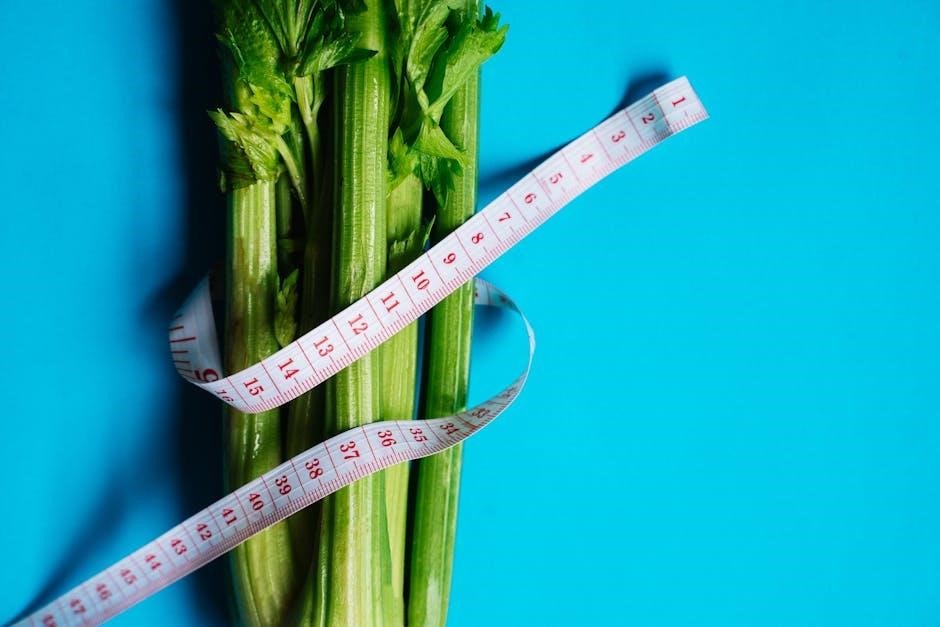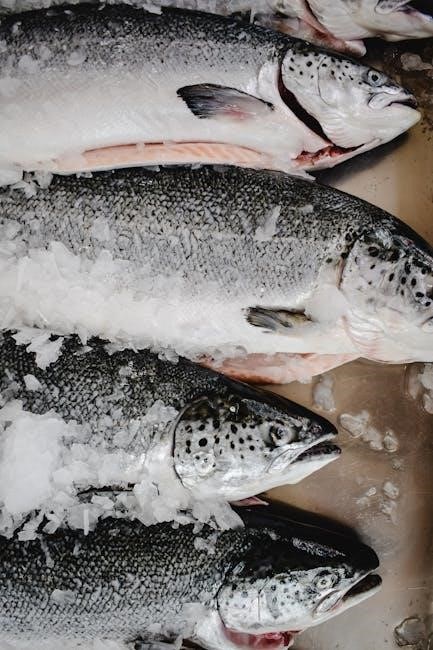atkin diet plan for 14 days pdf
Atkins Diet Plan for 14 Days PDF
Embark on a transformative journey with a comprehensive 14-day Atkins Diet plan, conveniently available in PDF format. This plan provides a structured approach to kickstart your weight loss goals, focusing on delicious low-carb recipes and meal ideas. Discover how to effectively manage your carbohydrate intake.
The Atkins Diet is a popular weight-loss approach centered around reducing carbohydrate intake. This dietary strategy aims to shift the body’s primary fuel source from carbohydrates to fats, inducing a metabolic state known as ketosis. By restricting carbs, the body begins to burn stored fat for energy, leading to weight loss.
The diet is structured into phases, each with varying levels of carbohydrate restriction. The initial phase, often called the induction phase, is the most restrictive, typically limiting net carb intake to between 20 and 40 grams per day. This phase is designed to rapidly initiate weight loss and stabilize blood sugar levels.
The Atkins Diet emphasizes the consumption of protein and healthy fats, sourced from meat, poultry, fish, eggs, and certain vegetables. It encourages individuals to focus on whole, unprocessed foods while limiting or avoiding sugary drinks, refined grains, and starchy vegetables. This approach aims to promote sustainable weight management and overall health.
What is the Atkins Diet?
The Atkins Diet is a low-carbohydrate eating plan, designed for weight loss and overall health improvement. It focuses on controlling carbohydrate intake to shift the body’s metabolism from burning glucose (from carbs) to burning fat for energy. This metabolic state, known as ketosis, is a key principle of the diet. The diet is not just about losing weight; it also aims to stabilize blood sugar levels and improve various health markers.

The Atkins Diet revolves around four phases, each with its own specific guidelines for carbohydrate intake. The initial phase, known as the Induction phase, is the most restrictive, typically limiting net carbs to 20-40 grams per day. This phase aims to jumpstart weight loss.
The Atkins Diet emphasizes consuming proteins, healthy fats, and fiber-rich vegetables. Processed foods, sugary drinks, and refined carbohydrates are restricted. The goal is to create a sustainable eating pattern that promotes weight management and long-term health benefits. This diet offers a structured approach to controlling carbohydrate consumption.
The Four Phases of the Atkins Diet
The Atkins Diet is structured around four distinct phases, each designed to progressively adjust your carbohydrate intake and eating habits. Phase 1, Induction, is the most restrictive, aiming for rapid weight loss by limiting net carbs to 20-40 grams daily. This phase primarily focuses on proteins, healthy fats, and foundation vegetables to shift your body into ketosis.
Phase 2, Ongoing Weight Loss (OWL), gradually increases your daily net carb intake in 5-gram increments. You’ll experiment to find your critical carbohydrate level for losing weight. This phase introduces more variety, including fruits and whole grains, while still prioritizing protein and healthy fats;
Phase 3, Pre-Maintenance, continues to increase your carb intake as you approach your target weight. The goal is to slow down weight loss and find a sustainable eating pattern. Phase 4, Lifetime Maintenance, focuses on maintaining your weight loss long-term by establishing healthy eating habits and lifestyle choices. Each phase is designed to help you reach your goals.

The 14-Day Induction Phase
The initial two weeks of the Atkins Diet, known as the Induction Phase, are crucial for jumpstarting weight loss. This phase emphasizes consuming meat and salad vegetables while strictly limiting net carb intake to facilitate rapid fat burning.
Focus on Meat and Salad Vegetables
During the Atkins Diet’s 14-day Induction Phase, the cornerstone of your meals will be lean proteins such as beef, chicken, turkey, fish, and eggs. These protein sources are essential for maintaining muscle mass and promoting satiety, helping to curb cravings and control hunger. Pair these proteins with a wide variety of non-starchy salad vegetables like lettuce, spinach, kale, broccoli, cauliflower, and bell peppers.
These vegetables provide essential vitamins, minerals, and fiber, contributing to overall health and aiding in digestion. By focusing on meat and salad vegetables, you’ll naturally reduce your carbohydrate intake, which is crucial for shifting your body into a fat-burning state. This combination not only supports weight loss but also helps stabilize blood sugar levels and reduce insulin spikes.
Remember that while variety is key, careful planning and portion control are essential to maximize your results during the induction phase. This approach sets the stage for successful long-term weight management and improved metabolic health. This method will allow you to feel full and satisfied while minimizing carb consumption.
Net Carb Intake (20-40 grams daily)
During the crucial 14-day Induction Phase of the Atkins Diet, meticulously managing your net carbohydrate intake is paramount for success. The target range is typically between 20 to 40 grams of net carbs per day, and this restriction is designed to shift your body into a state of ketosis, where it begins to burn fat for fuel instead of carbohydrates. To calculate net carbs, subtract the grams of fiber from the total grams of carbohydrates in a serving.
This stringent carb control requires careful attention to food labels and portion sizes. Focus on consuming foods that are naturally low in carbohydrates, such as lean proteins, healthy fats, and non-starchy vegetables. Avoid or severely limit foods high in carbs, including grains, sugars, fruits, and starchy vegetables. Monitoring your carb intake helps stabilize blood sugar levels and promote weight loss.
Adhering to this guideline is essential for experiencing the initial benefits of the Atkins Diet. This initial phase will help curb cravings and establish new, healthier eating habits. This practice will set the stage for long-term weight management and improved metabolic health. Consistent tracking and planning will help you stay on track and achieve your desired results.

Sample Meal Plan for Induction Phase
To effectively navigate the Atkins Diet’s Induction Phase, a structured meal plan is invaluable. This sample plan provides a glimpse into a typical day, focusing on keeping net carbs between 20-40 grams. Breakfast might consist of two scrambled eggs cooked in coconut oil with half an avocado. Lunch could be a large salad with grilled chicken or tuna, olive oil, and vinegar dressing, packed with leafy greens and low-carb vegetables.
For dinner, consider a serving of baked salmon with steamed broccoli or asparagus. Snacks, if needed, might include a handful of almonds or a celery stick with cream cheese. This plan emphasizes lean proteins, healthy fats, and non-starchy vegetables, all vital components of the Induction Phase. Remember that portion control is key, and it’s crucial to track your net carb intake meticulously.
Adjust this sample plan to suit your preferences and dietary needs, ensuring that you stay within the recommended carb limits. This structured approach will help you experience the initial benefits of the Atkins Diet while establishing healthy eating habits for long-term success. Consistently following this plan will help curb cravings and promote weight loss. Always consult a healthcare professional.

Breakfast Recipes
Start your day right with delicious and satisfying low-carb breakfast recipes perfectly aligned with the Atkins Diet. A popular choice is the classic omelet, customizable with cheese, spinach, mushrooms, or cooked ham. Scrambled eggs with avocado and a sprinkle of chili flakes offer a quick and healthy option. For a creamy treat, consider a chia seed pudding made with almond milk and a touch of stevia.
Another great option is a breakfast casserole with sausage, eggs, and your favorite non-starchy vegetables like bell peppers and onions. If you are short on time, try a protein shake with unsweetened almond milk, protein powder, and a handful of berries. Remember to always check the nutrition labels to ensure you are staying within your carb limits.
These recipes provide energy and essential nutrients, keeping you full and focused throughout the morning. Experiment with different flavor combinations and ingredients to find your favorites. Preparing your breakfast at home ensures you control the ingredients and can maintain a low-carb lifestyle. With these recipes, you can make a delicious, healthy and Atkins-approved breakfast every morning.
Lunch Recipes
Lunch on the Atkins diet can be both satisfying and simple. Consider a hearty salad with grilled chicken or fish, mixed greens, avocado, and a low-carb dressing like olive oil and vinegar. Another excellent option is a lettuce-wrapped burger with cheese and your favorite toppings, minus the bun. You can also enjoy a tuna salad made with mayonnaise and celery, served over a bed of spinach.

For a warm and comforting lunch, try a creamy soup made with cauliflower, broccoli, or mushrooms. Add some shredded cheese for extra flavor and satisfaction. Leftovers from dinner are also a great choice for a quick and easy lunch. Pack them in a container and take them with you to work or school.
Make sure to include plenty of non-starchy vegetables like cucumbers, bell peppers, and celery to keep you feeling full and satisfied. With a little planning, you can create delicious and low-carb lunches that will help you stay on track with your Atkins diet. Remember portion control to ensure you stay within your net carb limits.

Dinner Recipes
Dinner on the Atkins diet offers a wide array of delicious and satisfying options. A classic choice is a grilled steak with roasted asparagus and a side of garlic butter. Another popular recipe is baked salmon with a lemon-herb crust, served with sautéed spinach and a sprinkle of Parmesan cheese. You can also enjoy chicken stir-fry with plenty of non-starchy vegetables like broccoli, bell peppers, and onions, using a low-carb soy sauce alternative.
For a heartier meal, consider a shepherd’s pie with a cauliflower mash topping instead of potatoes. Ground beef or lamb can be used for the filling, along with carrots, celery, and onions. Another great option is a cheesy casserole with ground turkey, zucchini, and a creamy sauce.

Don’t forget about seafood! Shrimp scampi with zucchini noodles is a quick and easy dinner that’s packed with flavor. Remember to focus on lean proteins, healthy fats, and plenty of non-starchy vegetables to stay within your net carb limits and enjoy a fulfilling Atkins-friendly dinner.

Potential Side Effects
Starting the Atkins diet may lead to temporary side effects. Some individuals experience sluggishness during the initial phase. Other possible effects include nausea, vomiting, constipation, and dehydration. Staying hydrated and adjusting your diet can help mitigate these issues.
Sluggishness
When initiating the Atkins diet, particularly during the induction phase, many individuals report experiencing a noticeable feeling of sluggishness. This sensation is primarily attributed to the body’s adaptation to a significantly reduced carbohydrate intake. Carbohydrates serve as the body’s primary energy source, and when their availability is limited, the body must transition to utilizing fat for fuel. This metabolic shift, while ultimately beneficial for weight loss, can initially result in a temporary dip in energy levels.
Furthermore, the reduced intake of carbohydrates can affect blood sugar levels, leading to fluctuations that contribute to feelings of fatigue and lethargy. These fluctuations can disrupt the body’s natural energy regulation, making it difficult to maintain a consistent level of alertness and activity. It is important to note that this sluggishness is usually temporary and subsides as the body becomes more efficient at burning fat for energy. Ensuring adequate hydration and electrolyte intake can help alleviate these symptoms and support the body’s transition during the initial stages of the Atkins diet;
Nausea and Vomiting
While the Atkins diet can be an effective strategy for weight loss, some individuals may experience unpleasant side effects such as nausea and, in some cases, vomiting. These symptoms are often associated with the significant dietary changes that occur during the initial induction phase of the diet. The abrupt reduction in carbohydrate intake can disrupt the body’s digestive processes, leading to feelings of unease and discomfort in the stomach.
Furthermore, the increased consumption of fats, which is common in the Atkins diet, can also contribute to nausea. Fat digestion requires more effort from the body, and some individuals may find it difficult to process large quantities of fat, resulting in digestive upset.
Dehydration, a potential consequence of reduced carbohydrate intake, can also exacerbate nausea. Carbohydrates help retain water, and when their intake is limited, the body may lose fluids more quickly, leading to dehydration and nausea. Staying adequately hydrated by drinking plenty of water can help mitigate these effects. If nausea persists or worsens, it is advisable to consult with a healthcare professional.
Constipation and Dehydration
Constipation and dehydration are potential side effects that some individuals may encounter when following the Atkins diet, particularly during the initial induction phase. The Atkins diet restricts carbohydrate intake, which can lead to a reduction in fiber consumption, as many high-fiber foods are also high in carbohydrates. Fiber plays a crucial role in promoting regular bowel movements by adding bulk to the stool and facilitating its passage through the digestive system.
When fiber intake is limited, constipation can occur. To combat this, it’s essential to incorporate low-carb, high-fiber vegetables into the diet, such as leafy greens, broccoli, and cauliflower. Additionally, supplementing with fiber may be beneficial.
Dehydration is another concern, as carbohydrates help the body retain water. When carbohydrate intake is significantly reduced, the body may lose water more rapidly, leading to dehydration. Symptoms of dehydration include thirst, fatigue, headache, and dizziness. To prevent dehydration, it is crucial to drink plenty of water throughout the day, aiming for at least eight glasses.

Resources for Atkins Diet Plans
Explore various resources to support your Atkins Diet journey. These include the official Atkins website, offering plans and information, and a range of Atkins Diet cookbooks and guides with recipes and tips for success on the program.
Atkins Official Website
The Atkins official website serves as a central hub for comprehensive information regarding the Atkins Diet. Here, you can find detailed explanations of the diet’s principles, including the various phases and the science behind its effectiveness. The website offers a wealth of resources to guide you through each stage of the Atkins plan, from the initial induction phase to long-term maintenance.
You can access meal plans tailored to different phases, ensuring you have a structured approach to your dietary changes. Furthermore, the website features a collection of Atkins-friendly recipes, making it easier to prepare delicious and compliant meals. It also offers tools to track your progress, calculate net carb intake, and connect with other individuals following the Atkins Diet, fostering a supportive community.
Additionally, the official website provides access to articles, research studies, and expert advice, empowering you with the knowledge to make informed decisions about your health and nutrition while adhering to the Atkins Diet guidelines. It is a valuable resource for anyone seeking to understand and implement the Atkins Diet effectively.
Atkins Diet Cookbooks and Guides
To further support individuals embarking on the Atkins Diet, a variety of cookbooks and guides are available, offering structured meal plans, delicious recipes, and practical tips for success. These resources serve as invaluable companions, simplifying the process of adhering to the diet’s principles and making meal preparation enjoyable. Atkins diet cookbooks often include a 14-day meal plan, and beyond.
Atkins diet cookbooks provide a plethora of low-carb recipes suitable for all phases of the diet, from induction to maintenance. They often feature detailed nutritional information, making it easier to track your carbohydrate intake and stay within the recommended limits. Some guides focus specifically on the induction phase, offering tailored meal plans and advice for navigating this initial stage.
In addition to recipes, these cookbooks and guides provide valuable insights into the science behind the Atkins Diet, explaining how it works and offering tips for overcoming common challenges. They also address potential side effects and provide guidance on how to mitigate them. Whether you’re a beginner or an experienced Atkins dieter, these resources can enhance your understanding and improve your chances of achieving your weight loss goals.